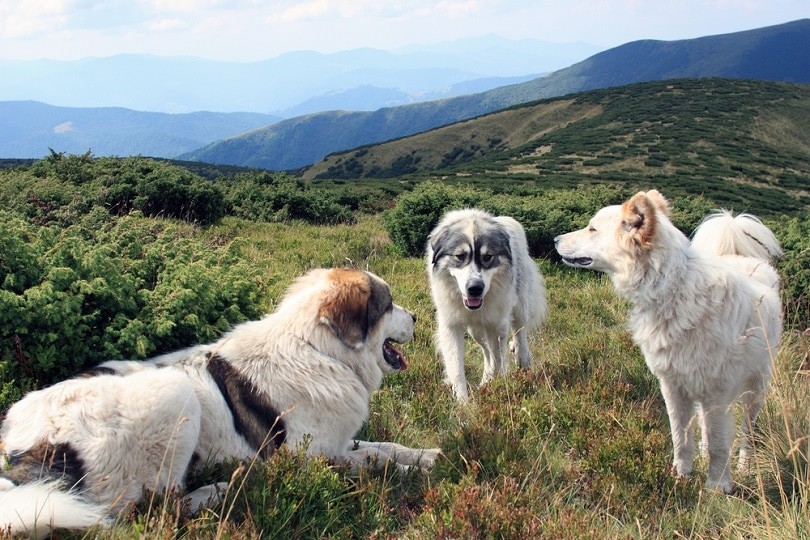
When talking about Romanian dogs, one probably immediately thinks of the many street dogs that eke out an existence under miserable conditions. However, this report does not refer to these Romanian dogs. Rather, we are talking about the dog breeds that actually originate in Romania, whose roots go back a long way.
Today we are talking about dogs that even bears, wolves and even lynxes avoid. Why? Because these wild animals know that these Romanian dog breeds are strong and have a very special willpower.
Their independence means that they need extremely good handlers. Perhaps this is the reason why they are rarely found in UK.
In Romania we find more mixed-breed dogs than pure-bred dogs. This is the result of the dogs, all dog breeds, not only running free on the streets, but also reproducing there completely uncontrolled. Neutering is a luxury that only very few people allow themselves for their animals.
Only through education and the castration efforts of various animal welfare organisations has a little order been brought to the society of street dogs. But it is still only a drop in the ocean.
However, if you are looking for the “real” Romanian dog breeds, you will only find 4 of them. Of them, 3 have already been recognised by the FCI.
All Romanian dogs have one thing in common: they were bred for a very specific purpose – the protection of the herd, farms and of course the people. Only by breeding very special characteristics could the dogs succeed in this.
For this reason, they still have a strong build today, possess strength and stamina, a thick coat to be able to stay with the herd even in the cold winter nights. In addition, courage, independence and self-confidence are still necessary.
The education of a Romanian dog
Even though in the course of the centuries the protective instinct was most important for humans, the requirements for the animals have changed a little. After all, we are no longer dealing with wild animals today. Nevertheless, most of the potential is still present in dogs. No wonder that their upbringing and socialisation should only be placed in experienced hands.
Only those who are aware of this responsibility and feel up to it should consider getting such a dog. Because one thing is certain: UK is relatively densely populated and dogs that defend themselves and their owners / herd independently are not welcome. They are considered aggressive and dangerous. Unfortunately!
In their upbringing, it is not only important that they master the basics and are well socialised. As herding dogs, they have great stamina. Therefore, sufficient exercise is a must for them. Likewise, they need a task that also challenges them intellectually.
Certainly they would like to let off steam on the dog sports field. However, due to their physique, they are only of limited use for dog sports. Therefore, long walks and a large garden, where they can also let off steam, are a necessary prerequisite for keeping a Romanian dog.
Let’s take a closer look at the essential character traits of these four Romanian dog breeds. Then, in the end, you may be able to say whether these dogs still occupy one of the top places on your wish list.
Ciobanesc Romanesc Carpatin – The Romanian Shepherd Dog
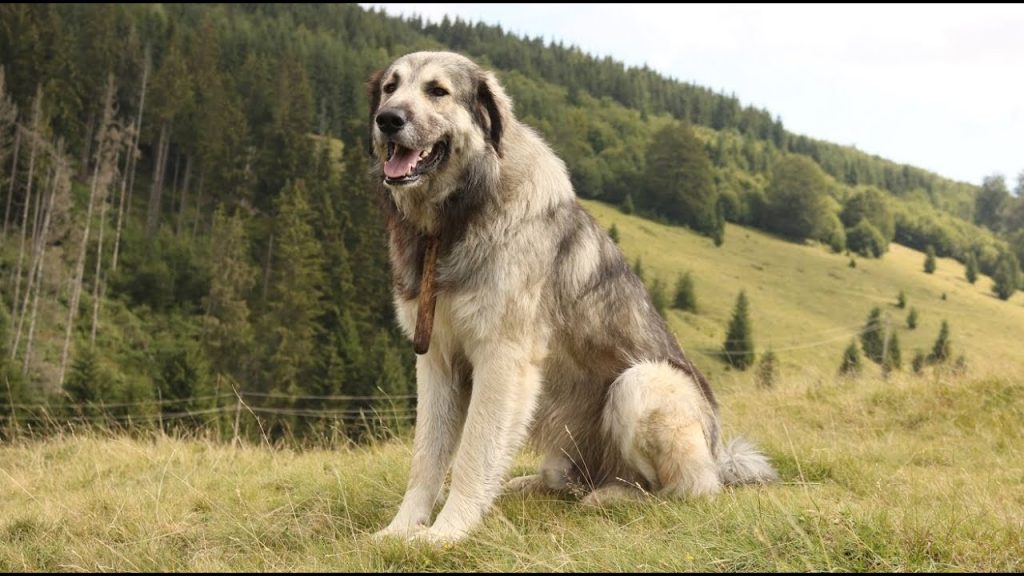
It is the first of the three Romanian dog breeds to be recognised by the FCI. It received its recognition in 2015 and has been assigned to the section “Sheepdog”. It is used as a herding and guard dog, but it is also a good companion dog when kept properly.
He is a dog with a remarkable inner calmness, making him a pleasantly quiet companion. He is 100% loyal to his owner. Certainly he is a watchdog, which is why he initially shows a sceptical reserve towards every stranger. But it is exactly this combination that makes him such a good watchdog.
This dog shows an imposing build with an equally imposing coat with corresponding undercoat. He wears the colour dark beige with black clouds. Pure beige or piebald white are also permitted. The upper coat is rather rough and straw-like, the undercoat all the more cuddly for it. Even if one thinks that these dogs like to manage their own coat care, it should not be neglected.
His appearance may indicate that he would be a little cumbersome and troublesome. Beware of underestimation. He can be lightning quick and take on the supposed enemy. As if out of nowhere.
The Romanian Shepherd Dog has a lifespan of 12 to 15 years. Its shoulder height is between 53 and 73 centimetres.
As already mentioned in the general part, loving dominance is necessary for the upbringing of the “Romanian”, leaving no doubt as to who is the alpha. Whoever succeeds in this, can also try dressage with him on the dog sports field. The more he trusts his master, the more likely he is to get involved in such experiments. The basic rule is to give in to his urge to move and make him “tired”. If this dog gets stupid ideas out of boredom, it may not always end well.
Be careful with other animals, no matter what kind: He is so into his role as protection and herding dog that he simply does not want to accept other animals at his side. When walking, this may lead to incidents with pushy dog owners whose dogs are allowed to play with everyone. Here one should hope for good upbringing and basic training, which can buffer some things.
At home he will be kept either with other herding dogs of his kind or alone. And always remember the large garden, which should be available for him without fail.
Ciobanesc Romanesc Corb
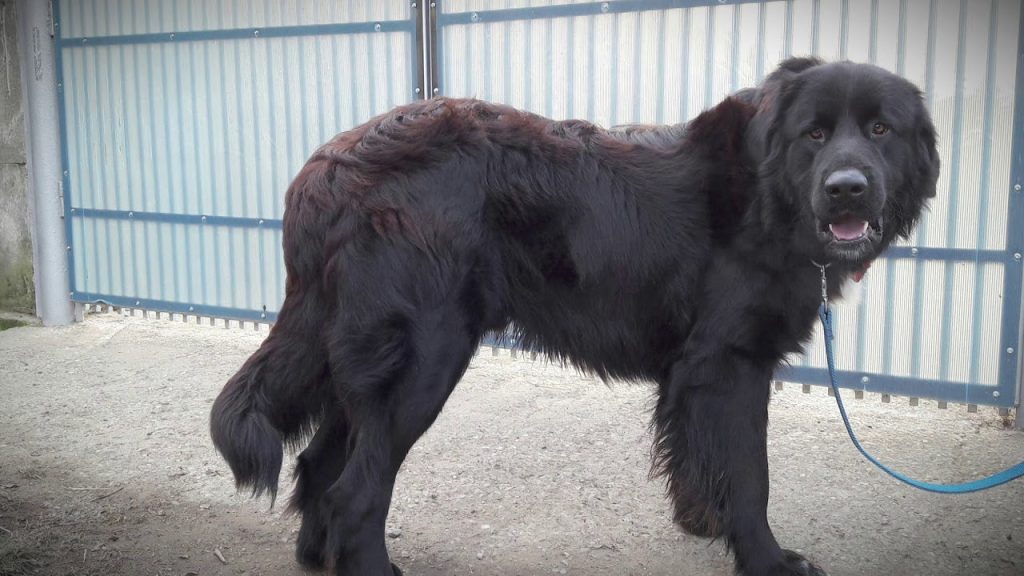
If you translate his name, it means “Romanian Raven Shepherd Dog”. Sometimes he is simply called “Corbi” for short. His coat is raven black through and through. Maximum white markings on the chest and paws are permissible. This dog is not yet recognised by the FCI.
This dog can reach an impressive height of almost 80 centimetres. If it is not counted among the large dog breeds, who is?
It is used as a shepherd and herding dog, but also as a very efficient guard dog.
What can be said about his nature? According to his previous tasks he is courageous, balanced, calm and proud. In addition, he has a guarding instinct that is very strong. Meeting the game of his home country is a matter of course for him.
With people, on the other hand, he is a little more cautious in his dealings. Loyal to his master, almost submissive, he is all the more suspicious of strangers, but still friendly. Because of this loyalty and devotion to his human, training him is easier than with other guard dogs. But beware – he can sometimes show a touch of stubbornness.
Because of his appearance, most people first take a little distance. His build is massive and robust, as if he first had to get his strong skeleton into the coat. His tail is already very thick and bushy when relaxed. If something excites him, it is erected and “puffed up” even further. An impressive sight.
His coat is described as short and double-layered. In the head and neck area there is a collar, which underlines the imposing appearance. At least 80% of the coat must be black. However, some white markings are allowed as long as they are not too large.
Ciobanesc Romanesc de Bucovina
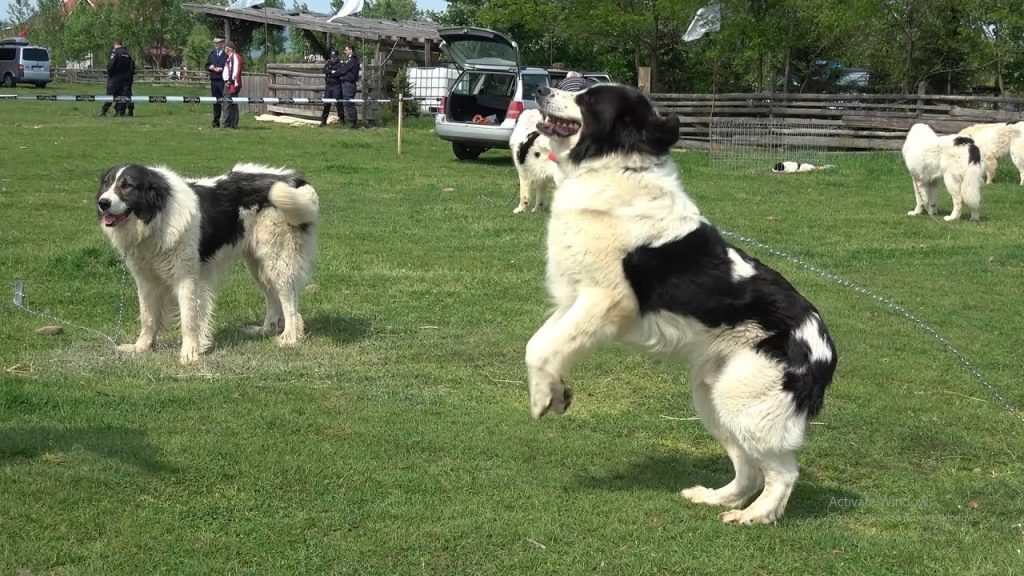
He is a guard dog through and through! Brave and above all reliable, he not only protects the herd, but also the farm. No intruder can get in here so quickly. He has also been recognised by the FCI, but is hardly known outside the country.
This dog is considered loyal, self-contained, protective and absolutely devoted to his family. Strangers, on the other hand, he first looks at scrutinisingly. Anyone who does not please him may have to leave the yard again.
It is his calm manner that sometimes makes him seem a little haughty and arrogant. But appearances are deceptive. He merely has everything in view and also under control, so that he just wants to let the others know – Here I am watching! And that even in a relaxed state. With a strong voice, he turns to the stranger and guides him outside if necessary.
The characteristics of the guard dog still characterise him very strongly today. Therefore, it is not a good idea to bring him into a family with small children. Even if children are already older, one must always keep a watchful eye on them when they are with the dog.
It is also important to ensure that the dog gets enough exercise. In addition to long forays through the meadows and fields, you should find a field of activity for him. Boredom must not be allowed to set in. A large garden is a MUST! Whether this dog can be persuaded to take part in a dog sport is questionable, but not completely out of the question.
Attention with the nutrition: From its homeland it is used to a rather protein-poor nutrition. This should also be provided here. Not only allergic reactions to too much protein can occur. He will also gain weight quickly, which would not be advantageous for a dog that is already very heavy. In the long run, the joints, ligaments and tendons could be severely damaged. It is amazing how little food this dog needs.
Ciobanesc Romanesc Mioritic
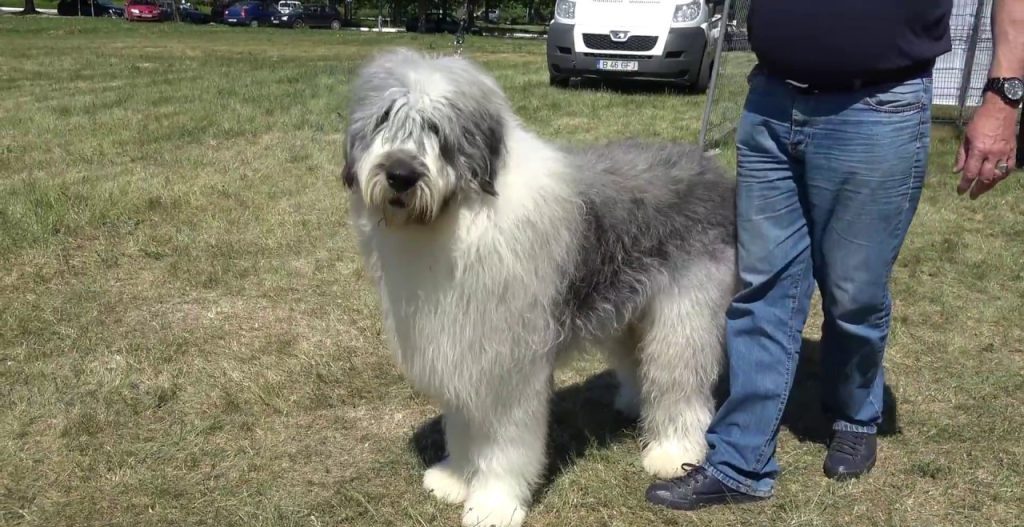
Yes, he is a first-class guardian of the herd and the farm. Wild animals do not get to the herd and strangers do not get past him into the yard. He does not really need any support. He is able to act completely independently. On the other hand, when it comes to his people, he unlocks his big guarding heart to let them in. If his basic training and socialisation have been inconspicuous, it is no problem to bring him together with children. Nevertheless, they should not be left alone.
His intelligence makes a consistent but loving upbringing and socialisation necessary. After all, there can only be one alpha animal in the family pack, the human. This can sometimes be a little difficult, because a command that makes no sense to the dog will never be carried out. He will do what he thinks is right in this situation. However, this makes it difficult to get him interested in a dog sport.
It is necessary to expose him to another way of occupation. The best would be participation in a herding dog club where work with small herds of animals is done regularly. Here he will be able to show off his skills.
This breed of dog has existed in Romania for several centuries. They are believed to have developed completely without the influence of humans. It was only in 2015 that they received final recognition as an independent breed from the FCI.
Translated, its name means “Romanian Shepherd Dog”. Even though it used to be a sought-after guard dog, breeding efforts today focus on the working dog. The male can have a height at the withers of up to 75 centimetres and more. At the same time, he can weigh up to 65 kilograms. Even though this makes him a stately, compact dog, he is nimble and agile on his feet.
He is a long-haired dog, with a well insulating undercoat. Therefore, he also needs a regular grooming programme. If necessary, for example in very hot summers, it may be necessary to thin out the undercoat. Above the eyes, the hair should be trimmed back regularly to give him good vision. According to the FCI standard, he wears the colours grey, white or white with black or grey patches.
Conclusion
The purebred Romanian dogs are remarkable dogs with a large portion of courage, self-confidence, stubbornness and above all independence. They don’t really need humans to successfully perform their original task of protecting and guarding herds and farms.
And it is precisely this point that makes it so difficult to get along with these dogs in a densely populated country like UK. Here, courageous, independently acting dogs are considered difficult, even dangerous.
Often these characteristics are blamed exclusively on the dogs. Yet it is the owner’s task not only to train and socialise the dog correctly, but also to optimise this condition. Of course, this can only be done with regular practice and mutual appreciation. These dogs are not cuddly animals, but that does not immediately make them a monster or even a dangerous dog.
Whoever is interested in one of these dogs in UK does not only need a good dog mind and experience with large guard dogs. He also needs the courage to go with his dog into a region where they might not be wanted. They belong in the countryside, perhaps on a single farm. Here they have every opportunity to live out their potential in a pleasant way. Wouldn’t that be nice?















